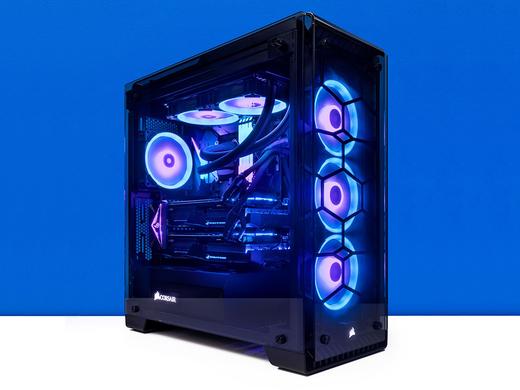Subtotal
$0.00
How RGB became a trend in Gaming PC and which utilities use it
12 July 2020 12:00
Games Technologies TOP

Videogames are more than just a hobby; this is clearly reflected by their impact on society and popular culture. Over the years, gamers have increased in number and have managed to turn their hobby into a successful industry that raises millions a year. While consoles have largely driven the growth of the video game industry, computers remained a popular gaming platform and much more powerful hardware began to be developed at very affordable prices. These days, the PC has become a common standard in gaming, performing just as highly as consoles.
With the growing popularity of the PC and its gaming components (such as the processor, GPU, motherboard, and others), gaming manufacturers are increasingly focusing on making it easy for inexperienced users to assemble their own gaming PCs. One of the most popular components of gaming PCs is undoubtedly the RGB light, which has become a standard feature for gaming-focused products.
There is no doubt that everyone likes to see eye-catching PCs with lights, colors and large transparent windows that allow us to see the internal hardware. Most manufacturers in the gaming arena sell products with RGB lighting (whether it’s configurable or not). It’s standard, at this point, to find PCs with lights in almost all their components (including the crappy ones like the Motherboard or the PSU). This makes us wonder: when did this fascination for RGB lights in Gaming begin?
Having said that, it is important to clarify exactly what RGB technology is and how it started to be used on PCs.
What is RGB technology?
RGB is an acronym formed by Red, Green and Blue, which represent a Chromatic mode where those three basic colors can be combined to create up to 16.7 million colors. The RGB color model is used in all devices that form images through light rays. The RGB colour mode consists of the three additive primary colour components and at least one synchronization component. The color components are the network, green and blue signals; each being transmitted independently and isolated from the rest. In this way there are no losses in the image processing since the primary colors still exist as such in their transmission.
Colored lighting inside the PC is nothing new; for many years, modders installed cold cathodes to give a touch of colour to the interior of their equipment. This practice became even more popular when LED strips became readily available, which were durable, cheap, easy to install, had a better aesthetic, and took advantage of the aforementioned RGB technology. This lighting trend quickly spread to peripherals, such as illuminated keyboards or headphones (even though the lighting is not visible to the wearer when using these peripherals).
The trend to light up a PC has always been part of building and modding culture, and has become even more popular these days because of easy installation. RGB is the perfect decorative addition to add a more personalized style to a PC, and of course, to make this device more eye-catching. The trend of adding RGB to any peripheral used for gaming has already become a standard in the market, and as long as gamers continue to buy these products, companies will continue to sell them.
However, the sheer number of components available has created a problem. If a gamer owns a wide variety of configurable peripherals, they may not all work in the same way and their gear may not match. Having said that, many gaming PC users note that RGB can be annoying to a certain point where they get tired and end up installing software (often one per piece of hardware) in order to disable the lights.
But, although RGB is largely an aesthetic feature, it is also possible to take advantage of this technology to obtain interesting and very useful functionalities in gaming.
What features can be used with RGB lighting on a Gaming PC?
The peripheral that is most benefited by being outfitted with RGB is undoubtedly the keyboard. In addition to helping the user see the keys when there is little light, it can also be configured so that only the keys illuminated are those needed to play the game. Another technology less used, but extremely useful are the RGB speakers, since they can be configured to light a specific color when reacting with an event in the game, such as in a video game shooter, where it is possible to configure the speakers to glow a specific color when an enemy is eliminated, and emit another color like red when the player takes damage. By taking advantage of this technology, users will be more immersed in the games they play.
Other useful implementations of RGB include those on pieces of hardware, such as the Motherboard or the GPU. These lights can be configured to signal to the user the status of that component. For example: the RGB on the GPU could be configured to shine a specific color when it reaches a temperature too high for its operation. The same could apply to some Motherboards.
In short, the RGB trend in gaming is likely to stick around, so it is increasingly necessary that this is not limited to simply aesthetics, but is used to improve the experience of the players.





